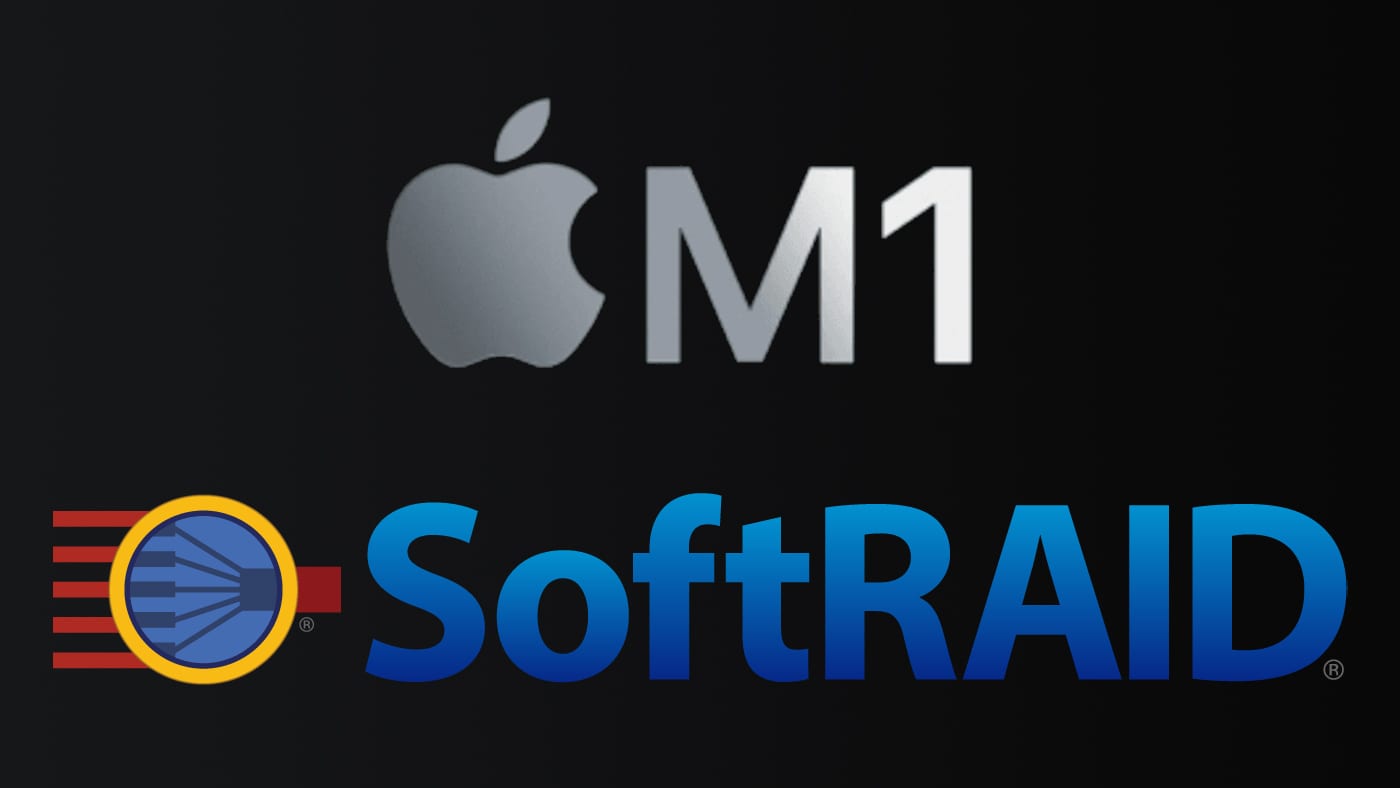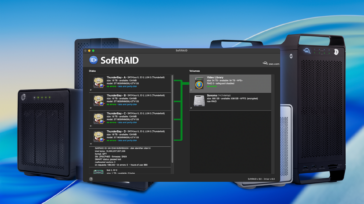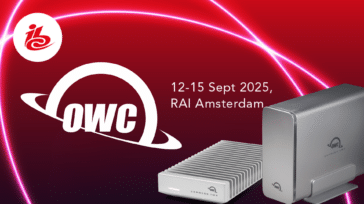
The night before a software release is always an exciting time. This is not because we are still changing the code up until the last minute, I usually freeze the code (stop making changes) a week before we ship as this gives us plenty of time for final testing. It’s exciting because we finally get to release what our team has spent so many months designing, coding, and testing. This release is no exception.
Not currently using softRAID? Download a free 30-day trial!
SoftRAID Newsletters
A couple of months ago, we decided to start a SoftRAID News email subscription. We will be sending out two types of email – a newsletter with tips about SoftRAID features you may not know about (and ways to take advantage of them) and a Critical Alert email. We know it would be better to alert you via email when we discover critical problems instead of hoping you stumble upon our blog posts – which we publish whenever we find a problem with macOS that affects SoftRAID volumes.
Two examples of critical problems that we have covered in the Rocket Yard blog over the past several months are:
- Why Is My Mac Hanging When Copying Files After Upgrading to macOS Catalina 10.15.4?
- Investigating & Preventing Kernel Panics in the 2019 Mac Pro
Both of these blog posts include workarounds to prevent these specific problems from occurring. Why should you have to go hunting on the web for this information when we could just email it to you when we discover it? This latest release of SoftRAID allows you to subscribe to both versions of the SoftRAID News email.
New Features in softRAID 5.8.4
We are always trying to prevent you from encountering problems with SoftRAID volumes. Version 5.8.4 adds two new features of this type.
1. 4Kn HDD & USB Enclosures
Several months ago, we were contacted by a user who was always getting a kernel panic when creating a SoftRAID volume. Our main support engineer, Mark, worked for several days to isolate the conditions which cause this problem. It turns out that if you are using a hard disk that uses 4 KB sectors (known as a 4Kn HDD) and the disk is in a USB enclosure (USB 3 or USB-C), then you will get a kernel panic every time you create a new volume. This is a bug that was introduced in macOS 10.15. This new release of SoftRAID includes a code that avoids the conditions where this bug occurs.
2. Disabling Secure Boot
As much as we find Apple’s implementation of Secure Boot cumbersome, it is here to stay. From what I’ve read on the web, the new Macs using Apple silicon won’t even load 3rd party drivers unless you disable Secure Boot. Having Secure Boot enabled also prevents the currently installed version of the SoftRAID driver from loading. This version of SoftRAID detects when Secure Boot is enabled and sends you to the Apple support page, which contains details on disabling it.
Tomorrow we will start getting feedback from users who have downloaded and installed this new version. If it is like past releases, the feedback will be overwhelmingly positive. And this is a testament to what a great software team we have here at OWC!
 Tim Standing is OWC’s Vice President of Software Engineering, Mac
Tim Standing is OWC’s Vice President of Software Engineering, Mac







Thank you for the good work and the update, much appreciated.
Any news on implementing RD6(0) in softRAID?
Or will that be, literally, something for version… 6?
Kind regards, dirk
We are working on RAID 6 and RAID 6+ which will be in version 6 of SoftRAID. RAID 6+ uses 2 dedicated parity disks, much the way that RAID 4 uses 1 dedicated parity disk. RAID 6+ offers faster read speeds for volumes which use SSDs.
This is great news, I have held off installing my accelsior 4m2 pcie card\, because of the stuff i read prior to installing it. This release gives me a lot more confidence. However a simple install guide line pdf or video would be a great help too. This is also comforting to know that you guys are up to speed with issues, and are prepared to fix them asap.
Kindest Regards
Robb
Editor
By George Studios
Canberra Australia.
I still recommend that my clients refrain from installing this software because I think disabling Apple’s Secure Boot feature represents a potentially massive security risk.
Are you able to work with an Apple’s existing frameworks to provide this functionality via officially-sanctioned APIs, etc.?
If so, I’d encourage you to do so, as this implementation forces users to incur substantial security risks.
Thank you so much for this comment. It helped me learn something important: Apple’s wording in the Secure Boot dialog is leading to a lot of confusion. As a result, I wrote a new blog post about Secure Boot and System Integrity Protection (SIP), how they differ and how they contribute to a more secure macOS.
Please send me any additional comments or questions after you read the new blog post. The blog post should be up by the end of today (7/27).
Thanks for helping educate me. – Tim
Great…please post link here when it is ready. TIA.
Here’s the link:
How Secure Boot and System Integrity Protection Guard Your Mac From Malware
What is missing from the article is how to sign-up for the newsletters.
I apologize. This is such an big omission on my part. You can sign up for the two newsletters here.
thx
Sent an email to your webmaster, but the signup form is posting to http://reader.macsales.com/public/webform/process/ which causes my browser to post a warning since I’m on a secure site, https://www.softraid.com.
If I browse over to https://reader.macsales.com/, I’m presented with a certificate for *.bm23.com. If I just go to https://macsales.com and look at the certificate, it does does define a SAN for reader.macsales.com.
It would be nice it someone would clean this up.
Thanks so much for this. I have forward this as an email to the person who created the new SoftRAID web site which we debuted last week.
Are you planning to What are your longer term plans regarding supporting system with Secure Boot enabled? As you say it’s not going away.
I don’t feel comfortable having to disable a useful security feature, yet I have a ThunderBlade and Express 4M2 which I don’t want to have to replace as I’m currently happy with them on Mojave and my iMac Pro.
For the future, Secure Boot is going to have to be disabled for all 3rd party drivers which reside in the kernel. These are the type of drivers which we have been using on Mac OS for the past 2 decades.
In a year, Apple will allow us to transition to a DriverKit driver, a type of driver which no longer resides in the kernel. At that point, you will be able to load our driver and leave Secure Boot enabled. I wish we could make that transition now but we are dependent on Apple making required interfaces available to us in DriverKit.
Thanks for the reply Tim. It’s good to know you plan to use DriverKit.
Personally, I’m nervous about the next 2 years as there will be a lot of change in Apple’s lower level frameworks. I’m not convinced they have always handled thing well in this regard. Good luck!
The change to DriverKit will be good for everyone, us as developers and you as our customers. It will be easier to debug and protect SoftRAID from roque drivers which occasionally overwrite the SoftRAID driver, in memory, data structures. The worst offender of this is one of the drivers which does copy protection for audio applications. For users who do upgrades, rather than clean installs, we have seen the Mac OS X 10.6 version still installed and it usually leads to corrupted SoftRAID driver memory and kernel panics. The other offender has been some video card drivers.
Being protected from this will be great. Keep in mind, that we will be the third class of drivers to move from the kernel to the DriverKit environment. It should be pretty mature by the time we start using it. (We will be moving our SAS driver to DriverKit in the next couple of months in order to support the upcoming Macs with Apple silicon.)
@Tim, hoping Apple is planning to release the APIs required for SoftRAID’s transition to DriverKit in Ventura. If not, hopefully you/team can emphasize the need for those APIs in the upcoming “Ask Apple” developer consultations:
https://developer.apple.com/events/ask-apple/
I know there has been a lot written about DriverKit and how wonderful it is but for a driver like SoftRAID which can support 17 GB/sec read and write as measured by AJA System Test (2 Accelsior 8M2s in a 2019 Mac Pro as a RAID 0 volume), the extra overhead would kill performance.
This is because the most expensive part of starting a read or write request is transferring the memory, which contains the file data, from user memory space to kernel memory space. For a kernel extension, like the SoftRAID driver, this happens once, when the read or write request gets handed to the file system. For a Driver Kit driver, this happens 3 times: when the request gets handed to the file system, when the file system hands the memory to the Driver Kit driver and then when the memory gets handed back to the kernel to get sent to the driver for the disk or blade.
So excuse my ignorance, does that mean we can just leave it running with secure boot on and not worry about the driver. Means we can’t install new versions but the raid drive works (in my case the 8TB Acelsior in my MP 2019) and its still seems to be checking for errors?
You must still disable Secure Boot to use the correct version of the SoftRAID driver and get all the drive monitoring fucntionality.